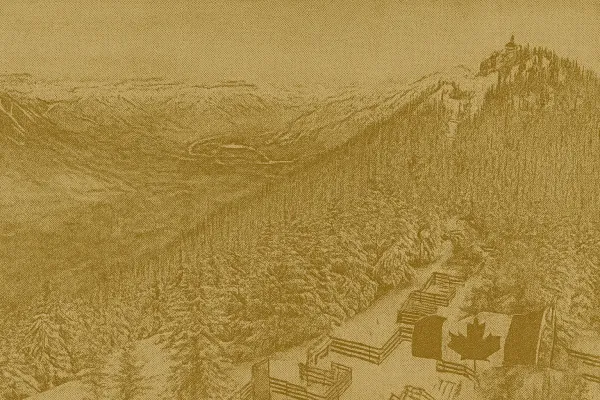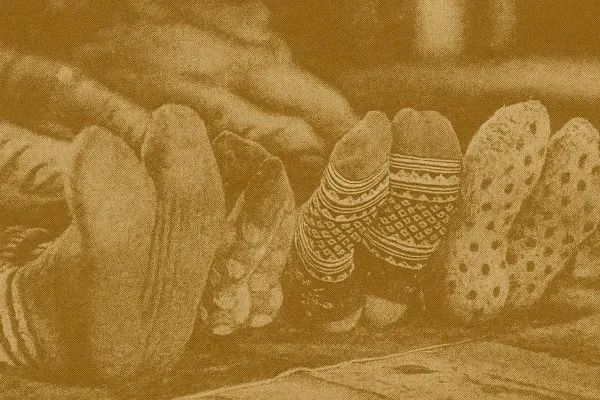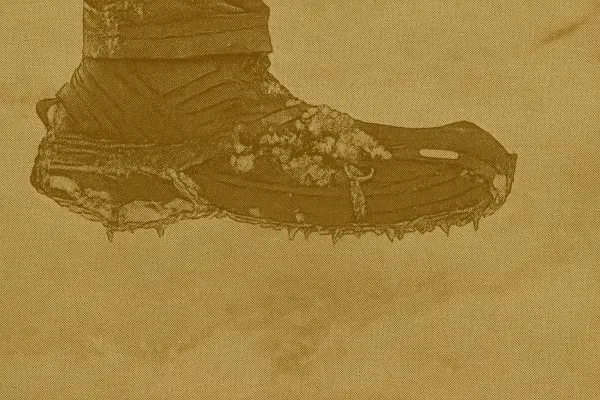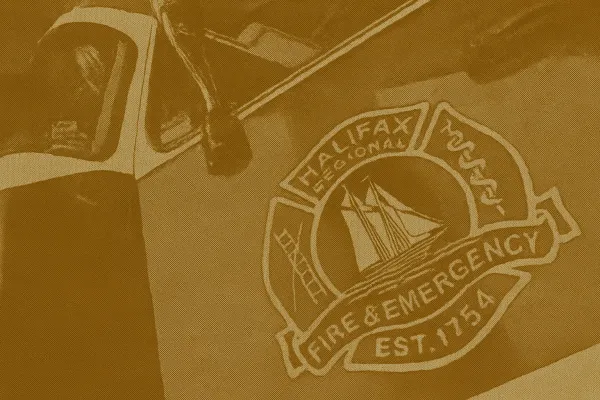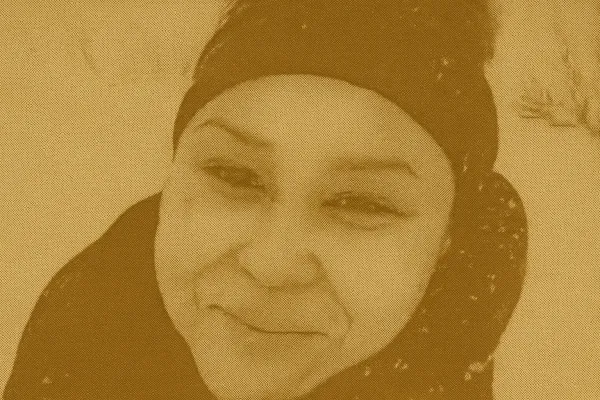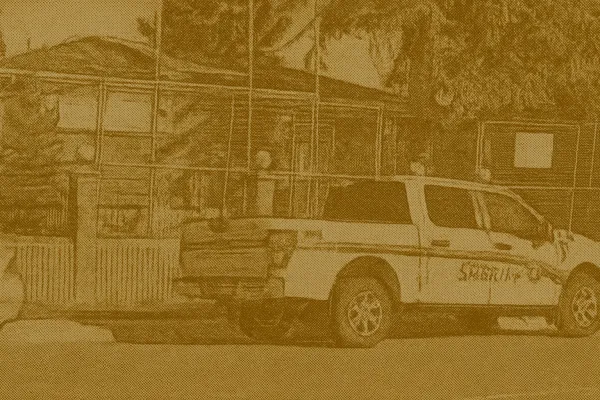Heads up: some of the links in this post are affiliate links. That means if you click and purchase, we may get a commission. It’s how we keep this site running without cluttering it with ads.
Canada transforms into a winter wonderland from December through March, offering some of the world's most spectacular cold-weather destinations. From the snow-capped peaks of the Canadian Rockies to charming eastern cities adorned with twinkling lights, the country provides endless opportunities for winter travellers seeking adventure, culture, and natural beauty.
The best places to visit in Canada in winter include iconic destinations like Banff National Park, Whistler, Quebec City, and Niagara Falls, each offering unique experiences from world-class skiing to magical ice festivals. These destinations showcase Canada's diverse winter landscape, where visitors can enjoy everything from northern lights viewing in remote wilderness areas to cosy urban experiences in vibrant cities.
Whether seeking thrilling outdoor adventures like dog sledding and ice climbing, cultural immersion through winter festivals and seasonal celebrations, or simply wanting to witness Canada's incredible wildlife against snowy backdrops, the country delivers unforgettable winter experiences. The combination of pristine natural settings, well-developed winter tourism infrastructure, and distinctly Canadian hospitality makes these destinations perfect for both seasoned winter enthusiasts and those discovering the magic of a true Canadian winter for the first time.
Top Winter Destinations in Canada
Canada transforms into a winter wonderland with snow-covered mountains, frozen waterfalls, and charming historic towns. These destinations offer world-class skiing, unique winter festivals, and breathtaking natural beauty.
Banff and Lake Louise
Banff National Park in Alberta stands as one of the best places to visit in Canada in winter. The Canadian Rockies create a stunning backdrop for winter activities.
Lake Louise becomes a massive outdoor ice skating rink surrounded by snow-capped peaks. The frozen lake hosts ice sculpture competitions and offers picture-perfect mountain views.
Winter Activities in Banff:
- Cross-country skiing on groomed trails
- Snowshoeing through pristine forests
- Dog sledding adventures
- Ice walking in frozen canyons
Lake Louise Ski Resort provides excellent downhill skiing with breathtaking alpine scenery. The resort offers runs for all skill levels from beginner to expert.
After cold outdoor adventures, visitors can warm up at the Banff Upper Hot Springs. The natural mineral waters provide the perfect retreat with mountain views.
Banff town offers cozy lodges, fine dining, and shopping along Banff Avenue. Wildlife spotting opportunities include elk, deer, and mountain sheep throughout the park.
Support The Canada Report and help keep it ad-free and independent — click here before you shop online . We may receive a small commission if you make a purchase. Your support means a lot — thank you.
Whistler and Whistler Village
Whistler in British Columbia ranks among the top winter vacations in Canada destinations. This mountain resort town hosted events during the 2010 Winter Olympics.
Whistler Blackcomb operates as Canada's largest ski resort with over 8,000 acres of terrain. The resort features two mountains connected by the Peak 2 Peak Gondola.
Skiing and Snowboarding Options:
- 200+ marked trails
- 16 alpine bowls
- 3 glaciers for extended seasons
- Terrain parks for freestyle skiing
Whistler Village provides a pedestrian-only area filled with shops, restaurants, and entertainment. The village maintains a European alpine atmosphere with cobblestone walkways.
Beyond skiing, visitors can enjoy snowmobiling, sleigh rides, and zip-lining. The Scandinave Spa offers outdoor hot pools and relaxation treatments.
Winter events include the Whistler Film Festival and various music festivals. The village nightlife features live music venues and cozy fireside lounges.
Quebec City and Old Town
Quebec City offers a European winter experience without leaving North America. The historic city becomes especially magical during winter months with snow-covered streets and twinkling lights.
Old Quebec holds UNESCO World Heritage status as North America's only fortified city. Cobblestone streets and 17th-century architecture create a fairy-tale winter setting.
The Quebec Winter Carnival runs from late January to mid-February as one of the world's largest winter festivals. Bonhomme, the carnival mascot, leads parades and outdoor celebrations.
Winter Activities Include:
- Ice canoeing on the St. Lawrence River
- Tobogganing at Terrasse Dufferin
- Ice sculpture viewing
- Horse-drawn carriage rides
Château Frontenac dominates the city skyline as one of the world's most photographed hotels. The castle-like structure looks especially stunning against winter snow.
Traditional Québécois cuisine warms visitors with dishes like tourtière, pea soup, and maple syrup treats. Cozy bistros and cafés line the narrow streets of Old Quebec.
Niagara Falls in Winter
Niagara Falls transforms into an icy wonderland during Canadian winters. The powerful waterfalls partially freeze, creating dramatic ice formations and rainbow mists.
Winter Features at the Falls:
- Frozen mist creates ice sculptures
- Fewer crowds allow better viewing
- Coloured lights illuminate ice formations
- Photography opportunities increase
The Winter Festival of Lights runs from November through January with millions of LED lights. The festival illuminates parks, buildings, and attractions throughout the region.
Niagara-on-the-Lake offers winter wine tours featuring ice wine tastings. Local wineries produce this sweet dessert wine from grapes frozen on the vine.
Indoor attractions include Journey Behind the Falls and the Butterfly Conservatory. These heated attractions provide relief from cold outdoor temperatures.
Winter hiking trails offer unique perspectives of the frozen landscape. Queen Victoria Park maintains walking paths with winter safety measures in place.
Iconic Activities and Adventures
Canada's winter landscape transforms into a playground for outdoor enthusiasts, offering world-class skiing at renowned resorts, pristine aurora viewing in dark sky preserves, traditional dog sledding experiences, and extensive trail networks for snowshoeing adventures.
Ski Resorts and Winter Sports
Canada boasts some of North America's premier ski destinations, with Banff Sunshine Village leading the pack in Alberta's Rocky Mountains. The resort offers over 3,300 acres of skiable terrain and receives an average of 9 metres of snow annually.
Visitors can experience diverse winter sports beyond downhill skiing. Cross-country skiing trails wind through national parks and provincial forests. Ice climbing attracts adventurers to frozen waterfalls in the Canadian Rockies.
Fat biking has gained popularity on groomed winter trails. Many resorts now offer specialized bikes with oversized tires for snow riding.
Other thrilling activities include tubing down designated hills and ziplining through snow-covered canopies. These activities provide excitement for families and adrenaline seekers alike.
Northern Lights Viewing
The aurora borealis creates spectacular displays across Canada's northern regions. Jasper National Park holds designation as a Dark Sky Preserve, making it ideal for celestial observation.
Prime viewing locations include:
- Northwest Territories
- Yukon Territory
- Northern Saskatchewan
- Northern Manitoba
Northern lights appear most frequently between September and March during peak darkness hours. Visitors should plan trips during new moon phases for optimal viewing conditions.
Professional aurora tours provide heated viewing areas and expert guidance. Many operators combine northern lights viewing with other winter activities like snowshoeing or hot spring visits.
Dog Sledding and Snowmobiling
Dog sledding represents one of Canada's most authentic winter experiences. Professional mushers guide visitors through pristine wilderness areas while sharing traditional techniques and stories.
Popular dog sledding regions include:
- Jasper National Park
- Algonquin Provincial Park
- Quebec's Laurentian Mountains
- British Columbia's interior
Snowmobiling offers high-speed adventure across vast trail networks. Canada maintains over 113,000 kilometres of groomed snowmobile trails connecting communities and wilderness areas.
Snowmobile tours range from guided half-day excursions to multi-day backcountry expeditions. Operators provide safety equipment and training for beginners.
Winter Hiking and Snowshoeing
Winter hiking opens access to snow-covered landscapes typically unreachable during summer months. Frozen lakes and rivers create new pathways through wilderness areas.
Snowshoeing provides an accessible entry point for winter exploration. Modern snowshoes accommodate various skill levels and terrain types. No previous experience is required for most trails.
Jasper offers extensive winter trail networks suitable for different abilities. The area features both gentle valley walks and challenging mountain routes.
Essential winter hiking considerations include:
- Layered clothing systems
- Emergency supplies
- Weather monitoring
- Trail condition updates
Many national and provincial parks maintain winter trail maps and provide equipment rental services for visitors.
Cultural Festivals and Seasonal Events
Canada's winter festivals transform cold months into vibrant celebrations featuring massive ice sculptures, traditional parades, and unique outdoor activities. The Rideau Canal Skateway becomes a focal point for winter festivities while Quebec's historic streets come alive with carnival atmosphere.
Winterlude Festival in Ottawa
The Winterlude festival runs from January 30 to February 16, 2026, attracting half a million visitors annually. This three-week celebration began in 1979 and centres around Ottawa's downtown core and Gatineau Park.
Key Activities:
- Skating on the world's largest skating rink
- Live musical performances
- Snow sculpture competitions
- Winter sports demonstrations
The festival features the famous Rideau Canal Skateway, which stretches 7.8 kilometres through the heart of Ottawa. Visitors can skate between downtown attractions while enjoying hot chocolate and beaver tails from vendors along the route.
Gatineau Park hosts cross-country skiing events and snowshoe tours during the festival. The park's 361 square kilometres of winter trails provide activities for all skill levels.
Quebec Winter Carnival
The Carnaval de Quebec celebrates its 71st year in 2025, running from February 7 to 16. This pre-Lenten carnival started in 1894 and draws over one million visitors to Quebec City each year.
Main Attractions:
- Two nighttime parades featuring illuminated floats
- Bonhomme's Palace made entirely of ice
- Musical evenings in outdoor venues
- Traditional inner tube slides down snow hills
The festival showcases French-Canadian culture through traditional music, dancing, and cuisine. Visitors can taste tourtière, maple taffy on snow, and other regional specialties at outdoor food stalls.
Quebec City's cobblestone streets and historic architecture create a magical backdrop for winter celebrations. The Plains of Abraham become a winter playground with activities like dog sledding and ice canoe races.
Ice Sculptures and Art Displays
Professional ice carvers from around the world create massive sculptures during winter festivals across Canada. These temporary art installations showcase incredible detail and craftsmanship in sub-zero temperatures.
Popular Ice Art Locations:
- Ottawa: Crystal Garden features large-scale sculptures
- Quebec City: Ice sculpture garden displays dozens of works
- Yellowknife: International Snow Carving Symposium
Artists use chainsaws, chisels, and specialized tools to carve blocks weighing several tonnes. The sculptures typically last 4-6 weeks depending on weather conditions.
Many festivals include interactive ice slides, ice bars, and frozen mazes. These installations combine artistic vision with practical entertainment for festival visitors of all ages.
Unique Canadian Winter Experiences
Canada's winter landscape offers extraordinary activities that blend outdoor adventure with cozy comforts. From serene ice fishing on frozen lakes to warming up in natural hot springs, these experiences showcase the country's unique winter culture.
Ice Fishing and Frozen Lakes
Ice fishing transforms Canada's frozen lakes into peaceful outdoor retreats. Anglers drill holes through thick ice and wait patiently for fish like trout, pike, and walleye.
Popular ice fishing destinations include Lake Simcoe in Ontario and Lake Winnipeg in Manitoba. Many locations offer heated huts with basic amenities for comfort during long fishing sessions.
The meditative nature of ice fishing creates a deeply Canadian outdoor experience. Beginners can join guided trips that include equipment and instruction.
Essential Ice Fishing Gear:
- Ice auger for drilling holes
- Insulated shelter or hut
- Warm clothing and boots
- Basic fishing tackle
- Portable heater
Most ice fishing seasons run from December through March when ice thickness reaches safe levels. Local outfitters provide equipment rentals and ensure proper safety measures.
Après-ski and Local Cuisine
Après-ski culture celebrates the end of skiing days with food, drinks, and socialising. Canadian ski resorts feature cozy lodges serving hearty local dishes and craft beverages.
Popular après-ski foods include poutine, tourtière, and maple-glazed salmon. Many mountain lodges offer regional specialties like Alberta beef or British Columbia seafood.
Whistler Village and Banff townsite provide excellent après-ski scenes with multiple restaurants and bars. Quebec's ski hills feature French-Canadian cuisine and local wines.
Top Après-ski Activities:
- Fireside dining in mountain lodges
- Local craft beer tastings
- Live music and entertainment
- Traditional Canadian comfort foods
- Hot chocolate and maple treats
The social atmosphere brings skiers together to share stories from the slopes. Many resorts host special events and themed nights during peak winter months.
Support The Canada Report and help keep it ad-free and independent — click here before you shop online . We may receive a small commission if you make a purchase. Your support means a lot — thank you.
Soaking in Hot Springs
Natural hot springs provide the perfect contrast to Canada's cold winter temperatures. The mineral-rich waters offer relaxation and therapeutic benefits after outdoor activities.
Banff Upper Hot Springs sits at 1,585 metres elevation with mountain views. The facility operates year-round with outdoor pools heated to 37-40°C.
British Columbia features numerous hot springs including Radium Hot Springs and Harrison Hot Springs. Many locations offer both developed facilities and natural wilderness pools.
Hot Springs Benefits:
- Muscle relaxation after skiing
- Improved circulation in cold weather
- Stress relief and mental wellness
- Scenic mountain or forest settings
- Year-round accessibility
The contrast between hot water and cold air creates a uniquely Canadian winter experience. Some hot springs require hiking or snowshoeing to reach remote locations.
Wildlife and Natural Wonders
Canada's winter landscapes offer extraordinary opportunities to witness polar bears in their natural habitat and experience some of the world's best stargazing conditions. These destinations combine unique wildlife encounters with stunning natural phenomena that can only be fully appreciated during the colder months.
Churchill and Manitoba Polar Bears
Churchill, Manitoba stands as the polar bear capital of the world. This remote town on Hudson Bay's shores provides unmatched access to polar bears during their peak season.
Best Viewing Times:
- October to November: Peak polar bear season
- Late February to March: Mothers with cubs emerge
The polar bears gather near Churchill while waiting for Hudson Bay to freeze. They need the sea ice to hunt seals, their primary food source. Visitors can observe these magnificent animals from specially designed tundra vehicles that keep everyone safe.
Wildlife Beyond Polar Bears:
- Arctic foxes in white winter coats
- Snowy owls hunting across the tundra
- Caribou migrating through the region
- Beluga whales (summer months)
Churchill also offers excellent opportunities to see the northern lights. The town's location in the auroral zone means visitors often experience both polar bears and aurora borealis during their stay.
Professional guides lead most tours and provide insights into polar bear behaviour and Arctic ecology. The experience requires warm clothing and advance booking, as tour operators limit group sizes.
Jasper National Park Stargazing
Jasper National Park serves as a designated dark sky preserve, making it one of the world's largest accessible dark sky areas. Winter conditions create ideal stargazing opportunities with clear, crisp air and long nights.
What Visitors Can See:
- Milky Way galaxy stretching across the sky
- Northern lights dancing overhead
- Planets and star clusters in detail
- Meteor showers throughout winter
The park's remote location and strict light pollution controls ensure exceptional visibility. Winter's dry air and minimal atmospheric interference create perfect conditions for astronomy enthusiasts and casual observers alike.
Stargazing Activities:
- Guided telescope tours with park interpreters
- Photography workshops for capturing night sky images
- Planetarium programs at the Jasper Planetarium
- Dark Sky Festival events (October)
Temperatures can drop significantly at night, so visitors need proper winter clothing. Many hotels and lodges provide stargazing equipment and heated viewing areas for guest comfort.
Frequently Asked Questions
Winter travellers to Canada often need specific details about ski destinations, festival locations, and preparation tips. Visitors also seek information about family activities, wildlife viewing opportunities, and iconic winter landmarks across the country.
What are the top-rated ski resorts in Canada for winter vacations?
Whistler Blackcomb in British Columbia offers over 8,100 acres of skiable terrain and ranks as one of North America's premier ski destinations. The resort features the Peak 2 Peak Gondola with stunning mountain views.
Banff National Park in Alberta provides world-class skiing surrounded by the Canadian Rockies. Three major ski areas serve the region: Lake Louise Ski Resort, Sunshine Village, and Mount Norquay.
Mont-Tremblant in Quebec delivers excellent skiing with a charming European-style village atmosphere. The resort offers 96 trails across four mountain sides with reliable snow conditions.
Blue Mountain in Ontario provides accessible skiing for eastern Canada visitors. The resort features 42 trails and a scenic village setting in the Collingwood area.
Which Canadian cities are famous for their winter festivals and events?
Quebec City hosts its famous Winter Carnival, one of the world's largest winter festivals. The event features ice sculptures, parades, and traditional Québécois celebrations throughout February.
Ottawa celebrates Winterlude along the Rideau Canal, which becomes the world's largest skating rink. The festival includes ice sculptures, outdoor concerts, and family-friendly winter activities.
Montreal offers numerous winter festivals including Igloofest and the Montreal en Lumière festival. These events feature outdoor music, culinary experiences, and artistic installations.
Winnipeg hosts the Festival du Voyageur, Western Canada's largest winter festival. The celebration showcases French-Canadian culture with music, food, and historical demonstrations.
Can you recommend some family-friendly winter activities in Canada?
Ice skating on Ottawa's Rideau Canal provides a unique family experience on a UNESCO World Heritage site. Families can skate for kilometres while enjoying BeaverTails and hot chocolate.
Dogsledding in the Canadian Rockies offers an authentic Canadian adventure suitable for children. Professional guides provide instruction and ensure safety throughout the experience.
Tobogganing and sledding are popular activities across Canada's cities and towns. Many locations offer dedicated hills and equipment rentals for families.
Ice fishing provides an educational outdoor experience in provinces like Ontario, Manitoba, and Alberta. Guided tours teach families about local fish species and traditional techniques.
Cross-country skiing and snowshoeing offer gentle winter sports accessible to various age groups. Many national and provincial parks maintain groomed trails for families.
Where can visitors experience the best of Canadian winter wildlife?
Churchill, Manitoba, serves as the polar bear capital of the world during winter months. Visitors can observe polar bears, Arctic foxes, and snowy owls in their natural habitat.
Algonquin Provincial Park in Ontario provides excellent winter wildlife viewing opportunities. Moose, wolves, and various bird species remain active throughout the winter season.
Banff and Jasper National Parks offer chances to spot elk, bighorn sheep, and mountain goats. Winter provides excellent visibility as animals move to lower elevations.
Point Pelee National Park in Ontario attracts winter bird species including snowy owls and rough-legged hawks. The park's southern location creates a unique winter birding destination.
What are the must-see natural winter wonders in Canada?
Niagara Falls transforms into a spectacular ice formation during winter, creating unique photo opportunities. The falls continue flowing while surrounding areas freeze into dramatic ice sculptures.
The Northern Lights are visible across northern Canada, with Yellowknife offering some of the best viewing conditions. Clear winter nights provide optimal aurora visibility from December through March.
Lake Louise in Banff National Park becomes a frozen jewel surrounded by snow-capped peaks. The lake's turquoise ice creates stunning winter photography opportunities.
The Icefields Parkway between Banff and Jasper showcases frozen waterfalls and glacier views. Winter transforms this scenic drive into a wonderland of ice formations.
Hopewell Rocks in New Brunswick creates unique winter landscapes as tide pools freeze. Visitors can walk on the ocean floor and explore ice formations around the famous flowerpot rocks.
How do tourists typically prepare for the cold Canadian winter weather?
Layering clothing systems work best for Canadian winter conditions. Base layers, insulating layers, and waterproof outer shells provide flexibility for varying temperatures and activities.
Waterproof winter boots with good traction are essential for icy conditions. Boots should be rated for temperatures expected during the visit and provide adequate insulation.
Accessories like warm hats, insulated gloves, and scarves prevent heat loss from extremities. Many visitors underestimate the importance of protecting face and neck areas.
Winter travel costs are often lower than summer due to reduced tourist numbers. However, visitors should budget for appropriate winter gear and potential weather delays.
Emergency supplies including extra clothing, snacks, and communication devices are important for winter travel. Vehicle emergency kits become crucial for those planning to drive in winter conditions.


